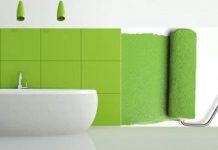
You have finally decided to paint that piece of furniture that you want to renovate. You already know the type of paint and the color that you are going to use, but when you go to your DIY center there is such a variety of painting tools that you do not know which one to choose. If you have doubts when paint a piece of furniture with a brush or rollerdo not miss this guide to choose which one is best for you.
I have to admit that I started painting furniture with the first brush or roller I found around the house. On some occasions the flute sounded by chance and I got a good result but on others I was not so lucky, so I decided to investigate which one would be more appropriate when painting a piece of furniture with a brush or a roller. From the theory and experience that practice provides, this guide emerged, which I hope will be useful to you.
On this side of the ring… the brush
There are different ways of classify the brushes:
- Due to their shape, they can be pressed brushes (round) or brushes (flat). Pressed brushes are best suited for painting furniture with moldings and reliefs, as well as for corners and angles. Stirrers are usually used on flat surfaces, as well as for varnishing and lacquering.
- Natural or synthetic bristles (nylon, polyester, combined). Usually natural bristle brushes and trowels are used with synthetic or oil-based paints, and for this reason they are the ones recommended for varnishing wood and for painting with synthetic enamels, since their bristles are softer and do not leave marks. On the other hand, those with synthetic bristles are often recommended for acrylic paints since the water they have as a base softens the natural hair causing it to lose body, while a brush with synthetic hair does maintain its shape.
- Of different widths and thicknesses. The size of the brush or trowel will be proportional to that of the furniture or object to be painted, in fact it is convenient to use several sizes that fit the different parts of it since it is not the same to paint the side of a sideboard than the plinth , for instance.
- Short and hard or long and soft bristles. The short and hard hair brushes are used to create textures since the brushstrokes are more marked, they are also the ones used in the decoration with stencil or for waxing. On the other hand, brushes and trowels with long and soft hair provide a smoother finish and are ideal for painting large surfaces.
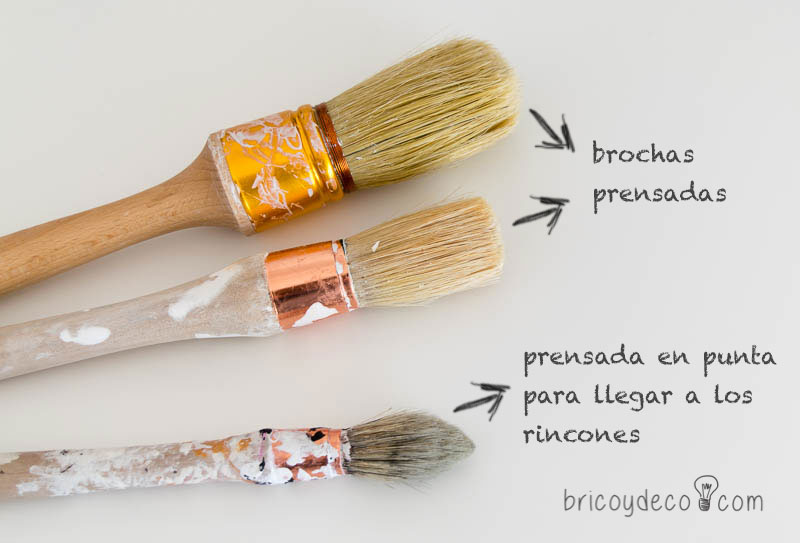
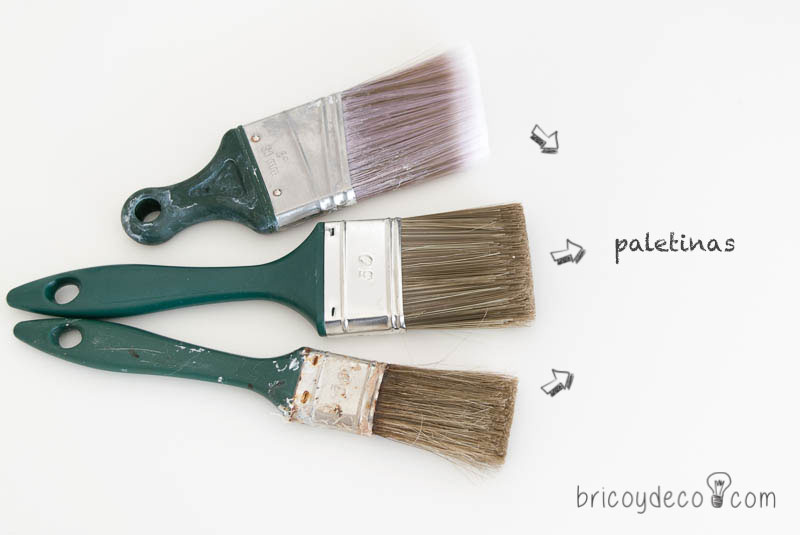
In this link you will find a complete guide on brushes and paletinas.
And on the other side of the ring… the roller
As a rule, pure new wool rollers are recommended for varnishing wood and furniturewhile foam, microfiber and flock rollers are used with acrylic paints and enamels.
To achieve a completely smooth finish with water-based paints, zero-pore foam rollers are usually used. With synthetic enamels, flocked or “peach skin” rollers are recommended, although there is also the option of choosing a roller made of a mixture of natural fibers with polyester for water-based and oil-based or synthetic paints.
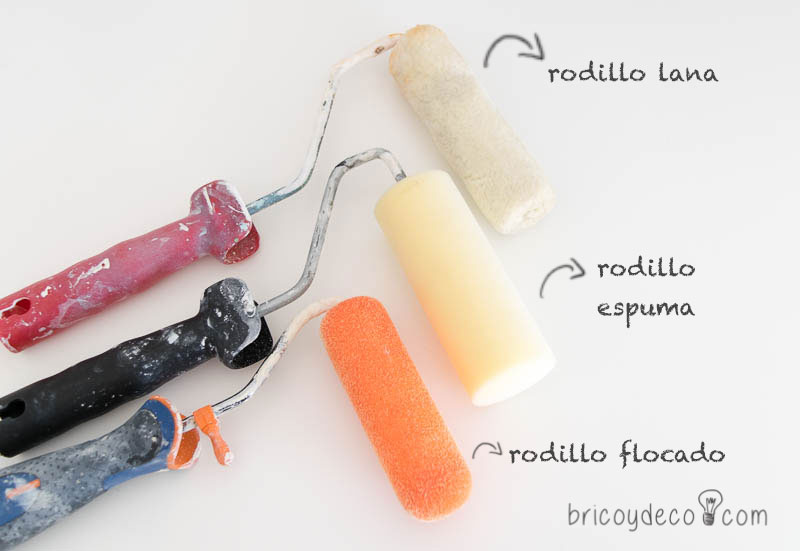
Paint a piece of furniture with a brush or roller?
I always say that there is no perfect tool or technique, but the most appropriate for the work we want to do. With a roller you will get a more uniform finish when painting a piece of furniture. You will also save hours of work if you are going to paint a large surface such as doors, tables or bookcases.
As a disadvantage, I would point out that rollers consume more paint than brushes and its duration is much shorter, in fact if you use synthetic paints you will have to dispose of them directly since the solvents to clean the remains of paint usually damage foam rollers.
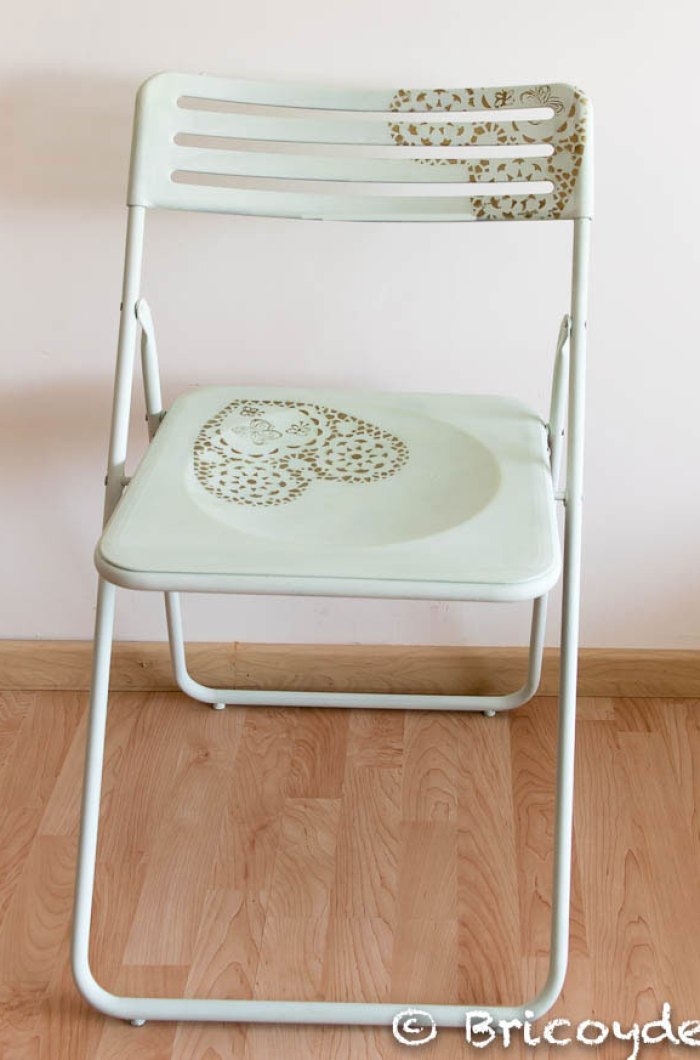
On the other hand, it is more advisable brush painting furniture with moldings and rounded shapes such as chairs. When choosing between a pressed brush or a paletina brush, it should be taken into account that there is a higher density of bristles in a pressed or round brush, so the brushstrokes will be more noticeable.
The biggest drawback of brushes is that on many occasions they lose some hair or bristle that easily becomes part of our furniture forever.
From the theory to the practice…
I personally use rollers for painting large melamine and wood furniture such as bookcases or doors. My favorite rollers are the zero-pore foam rollers and the flocked or peach skin ones, I have used them interchangeably with water-based and oil-based or synthetic paints and they have given me good results in both, taking into account these tips:
- It is not necessary to load the foam rollers much and drain them well, the more paint there is, the more likely bubbles will appear. In addition, you should always try to give thin layers of paint, since 4 thin layers are better than two thick ones, it will take more time but the finish will be much better.
- If you sand between layers with a very fine sandpaper, you will ensure a perfect finish.
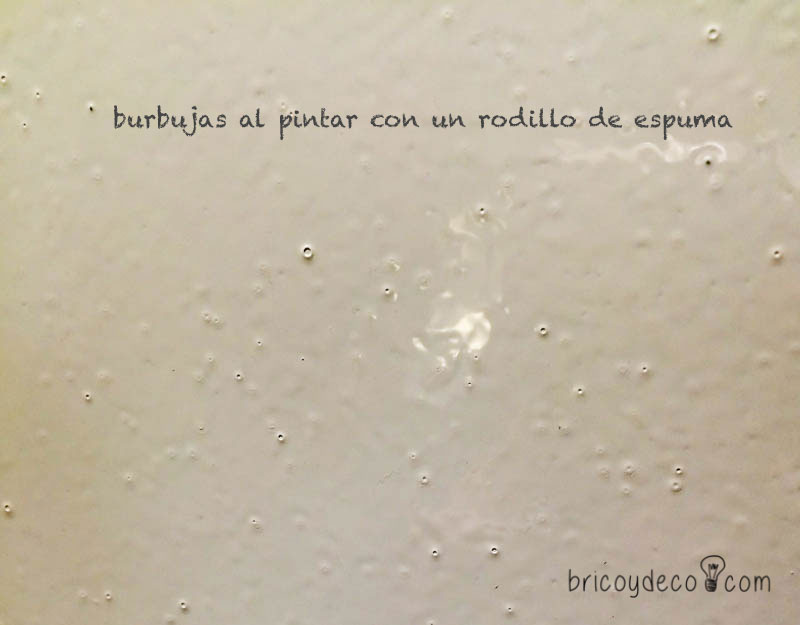
On the other hand, when I want to give a more rustic finish I usually paint with a pressed brush, especially with blackboard paint or chalk paint.
I use the paletina when I want to save a little paint, I give a first coat with it and then pass the roller without having loaded it with paint. In this way I get a greater coverage in the first layer with the roller finish but without spending too much.
I painted the melamine bookcase in the following image with synthetic enamel and a zero pore foam roller (you can see the step by step in this link).
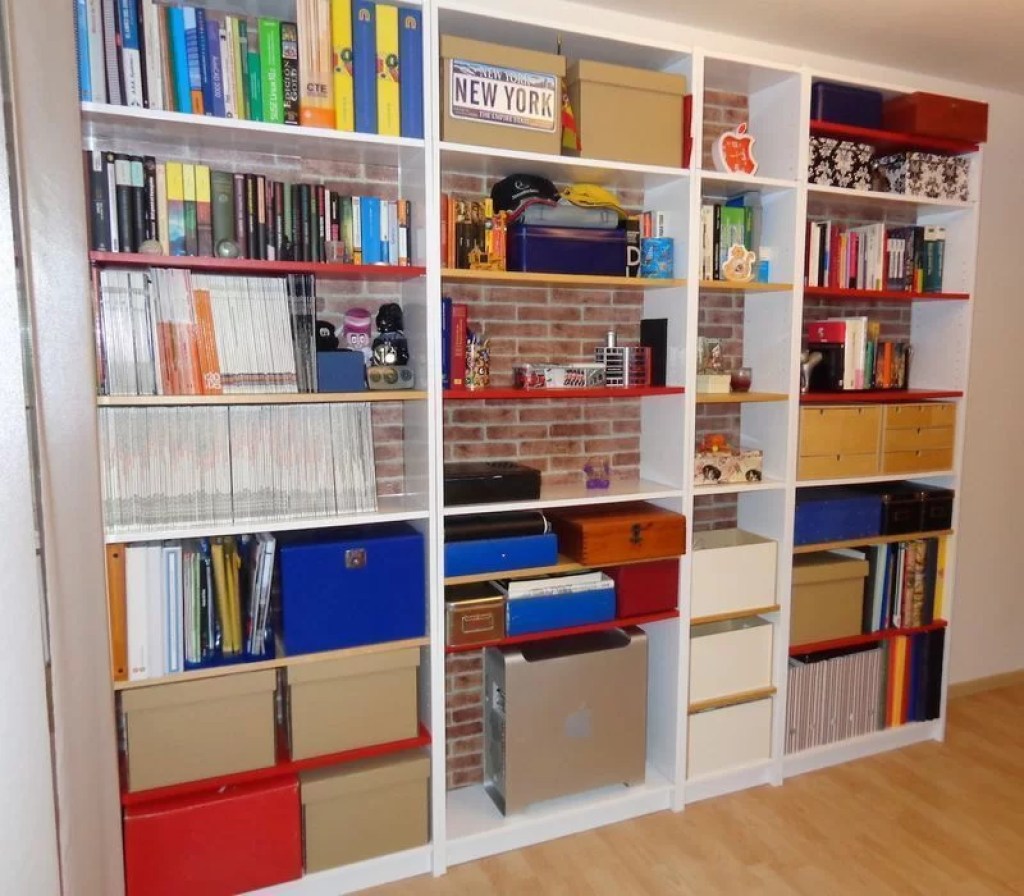
And I also used a zero-pore foam roller to paint this other melamine bookcase with chalkboard paint:
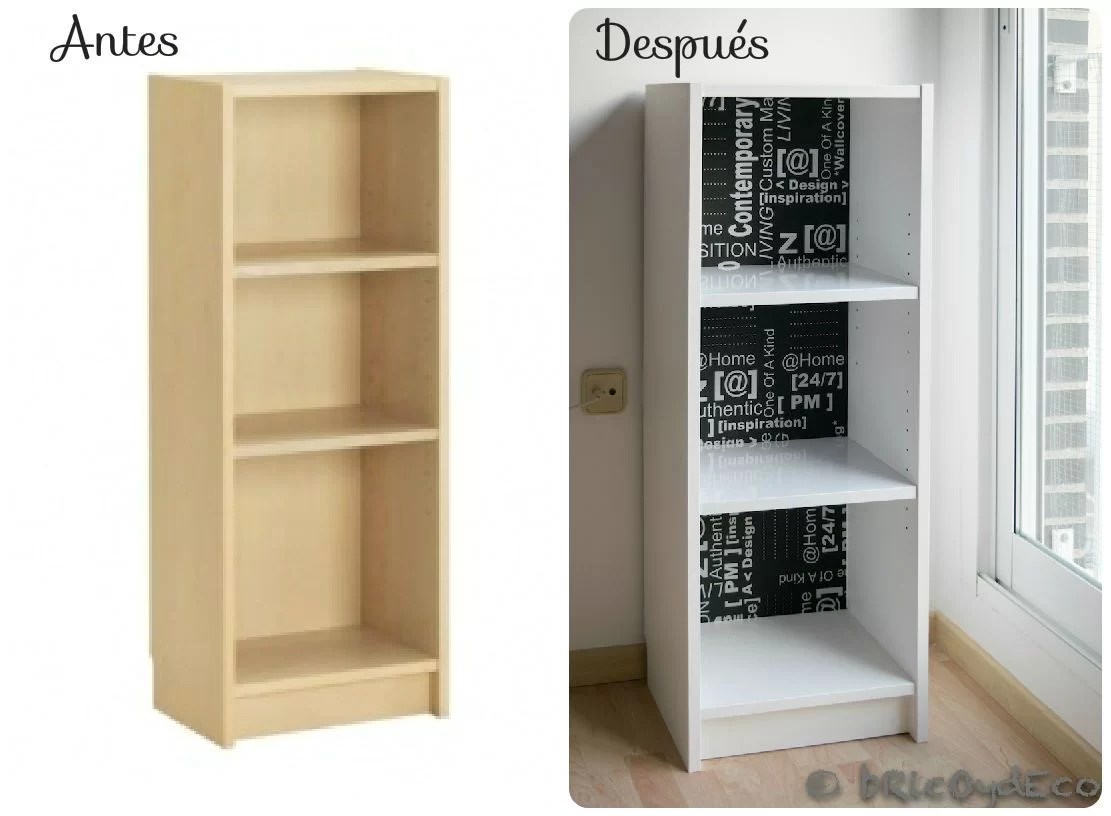
On the other hand, for this chest of drawers I combined the roller with the brush, with the foam roller I gave several layers of chalkboard paint and with a pressed brush I created the worn effect (you can see the step by step in this link).
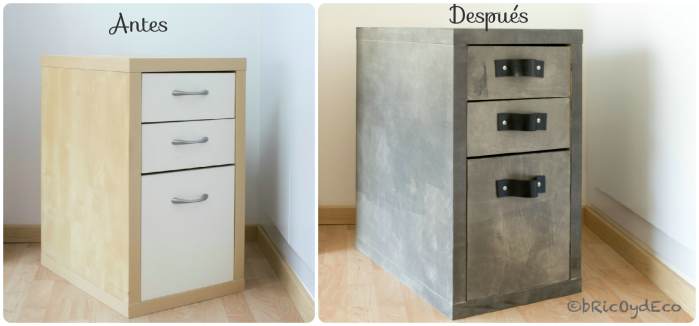
For this other chest of drawers I also combined a brush and a flocked roller to paint with water-based enamel on wood.
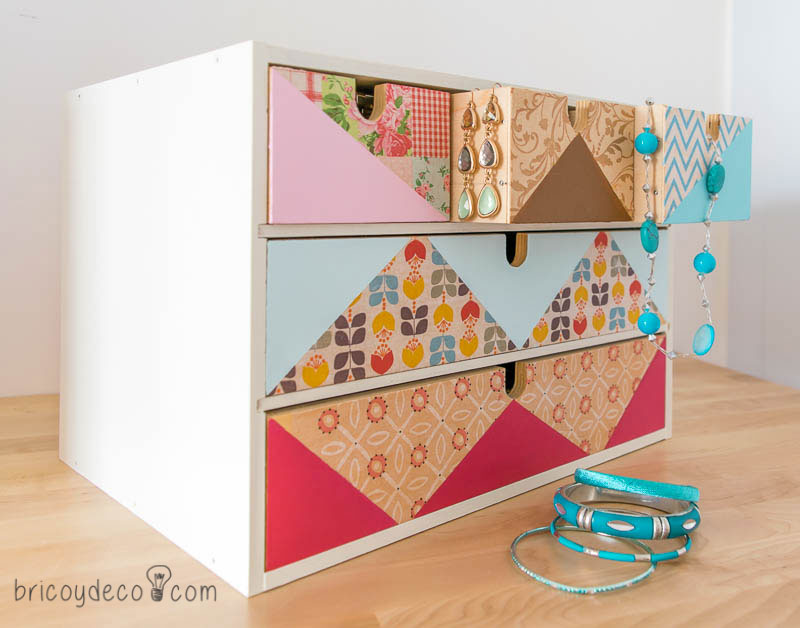
Some maintenance and care tips for brushes and rollers
These tips will help you keep your brushes and rollers in perfect condition:
- Boil your new natural bristle brushes in water, this way you can easily remove the bristles that are loose.
- Another option for synthetic bristle brushes is to soak them in water for 12 hours. Then dry them with the help of a towel and a hair dryer at low temperature.
- Before painting with a brush, pass masking or painter’s tape several times so that the loose hairs adhere to it.
- The previous trick can be used with fiber and wool rollers, although you can also use a roller used to remove lint and hair from clothes.
- Clean the remains of acrylic or water-based paints from the foam rollers with a little liquid soap and placing it under the tap with hot water. After pressing it little by little to extract the paint from inside, the roller will be completely clean when the water comes out clear and without traces of paint when pressed.
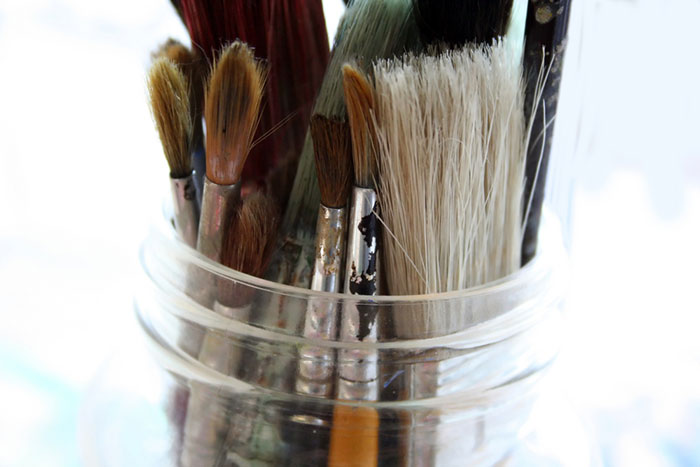
Summarizing…
When deciding whether to paint a piece of furniture with a brush or a roller, you first have to think, in this order, about its volume and the style you want to give it. For example, for a 2×2 meter cabinet, always use a roller even if you want to give it a rustic finish, at least the first coats, since painting it completely with a brush or trowel can become exasperating, use them only for the moldings and nooks and crannies Give it a final coat with a brush to give it that rustic look or use techniques such as pickling, aging, etc.
If the piece of furniture is not very large, then choose a roller for more uniform finishes or a brush to create effects. The material of the brush or roller will depend on the type of paint you use: natural bristles for oil-based paints and varnishes and synthetic bristles for water-based paints, wool rollers for varnishes and fiber, foam and flocked rollers for all types of paints .
I hope that this guide has helped you when it comes to painting a piece of furniture with a brush or roller and getting the finish you are looking for. If you liked this post you can see many more tips, tutorials and DIY ideas at


